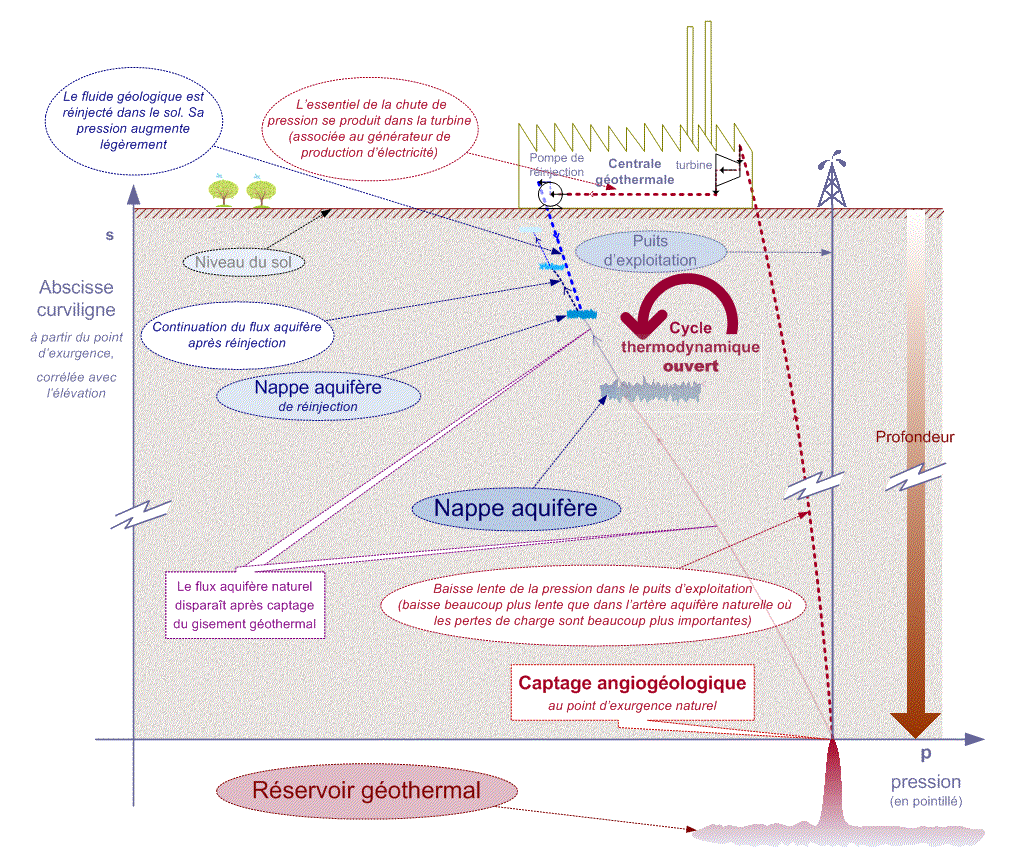Exploitation of the pressure of natural underground water flows
To Exploit ascending underground water flow industrially for the purpose of electrical production amounts diverting this flow surfaces some to extract the maximum of possible enthalpy from it. The contribution of the pressure to the electrical production is appréciablement less than the contribution of heat. The thermodynamic cycle is open: the collected geological fluid must be reinjected on the level of the aquifers in which they would have naturally flowed (without geothermal exploitation).
The high enthalpy geothermy, based on a natural aqueous flow diverts this flow to convert it into electricity. As it is about an opened cycle, the water flow is reinjected in the ground without intention to use it again. The geothermal reservoir does not become exhausted therefore, because it itself is fed by a natural related flow (see the cycle of water).
Almost the whole of the existing geothermal exploitations reinject this flow with great depth whereas a knowledge of the ascending water cycle makes it possible to reinject it in the aquifers close to surface. Underground water flow is thus reinjected there it would have naturally ended. The re-injection can be done only in the fed aquifers - directly or indirectly - by a water artery not too long (one does not reinject to 5 km of the collecting well).
The figure below illustrates the evolution of the pressure of an underground water flow exploited for the purpose of electrical production from an angiogeological point of view.
Evolution of the pressure within the framework of a geothermal exploitation of natural underground water flow
Conclusion
Ascending underground water flows circulate in the tree structure of water vessels formed starting from the geothermal reservoirs. The comprehension of nature, the structure, the hydrodynamics of these water vessels grows rich by the analysis and the quantification of total flows which feed them. Contrary to the generally accepted ideas, the infiltration of water in the ground feeds only in a negligible way the geothermal reservoirs. The latter are fed according to a mechanism explained in our macroscopic analysis of the cycle of water.

